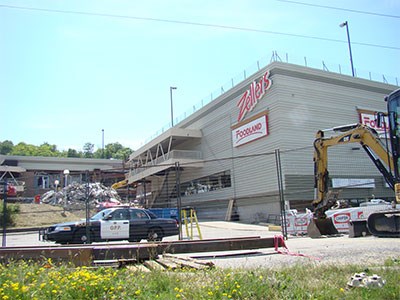Even before Justice Paul Bélanger released his report on the Elliot Lake Inquiry, which outlines recommendations for improving policies and standards related to the engineering profession, Professional Engineers Ontario (PEO) was already reviewing its own standards.
Early on in the process, the PEO, which had standing at the inquiry, allowing the organization insight into the process, identified some common themes coming out of the testimony, said Chris Roney, a councillor with the PEO. That’s what the PEO used to develop 11 recommendations to the inquiry, which were almost all endorsed by Bélanger on Oct. 15.
“The recommendations that we put forward are all things that we felt fairly strongly about, so we didn’t even wait for the report to be released to start work on what it would take to implement those recommendations,” said Roney, who took the lead on the organization’s Elliot Lake Advisory Committee. “We’ve been working on them already for some time.”
A major area of concern was the quality of the structural adequacy reports generated over the 33-year life of the building. Bélanger found they lacked consistency in their calibre and accuracy.
In response, the PEO issued a practice bulletin outlining its expectations for engineers registered with the organization, including how detailed reports should be and what kind of background information should be included.
Throughout the inquiry, testimony demonstrated that reports were often generated more to satisfy clients instead of addressing the major issues surrounding the building’s stability, Roney said.
“What we saw was sometimes the scope of the reports is influenced by the particular building owners’ desires and needs and even budget,” Roney said. “If you’re giving too limited a budget, the scope is also going to be too limited.”
The new recommendation suggests engineers “take some of that scope of control out of the hands of the building owners and make it more of an established standard that everybody has to meet,” Roney said.
In relation, the PEO has recommended that engineers who prepare the structural adequacy reports should have a special level of skills, expertise, and training that would qualify them for a special structural engineering specialist designation.
“It requires a particular level of expertise to be able to understand and assess deterioration in an existing building, and it requires a great deal of judgment, and so it’s important that the individuals that are undertaking that work have demonstrable training and skills and expertise in those particular aspects, particularly related to assessment of an existing building and the mechanisms of deterioration,” Roney said.
As the body responsible for issuing engineering licences and investigating professional misconduct amongst its members, Roney said there are ongoing investigations into some of the engineers who were involved with the mall over the years. If any negligence or incompetence is found, the PEO could mete out disciplinary action.
According to the timeline set out by Bélanger in his report, the government must report back to the inquiry within 12 months of the report’s release, in October 2015. That will then dictate the speed at which the recommendations are implemented, Roney said.
The PEO is confident that enforcing the recommendations will bring about the changes that are needed in the profession, he said, referencing Bélanger’s cutting remarks about the roof collapse:
“Although it was rust that defeated the structure of the Algo Mall, the real story behind the collapse is one of human, not material, failure,” Bélanger wrote. “Many of those whose calling or occupation touched the mall displayed failings — its designers and builders, its owners, some architects and engineers, as well as the municipal and provincial officials charged with the duty of protecting the public.”
“Some of those humans he was referring to were indeed engineers, and it’s unfortunate that such actions, or inactions in some cases, reflected upon the engineering profession as a whole,” Roney said. “It’s important, we think, that we’ll be judged as a profession on how we move forward from this tragedy.”
“We have certainly taken the lessons to heart and worked very hard to put together these recommendations, and I think that in the end we’re going to have a stronger profession and even better reputation in terms of working in the best interests of the public when engineering is involved so that tragedies like this don’t happen again.”




